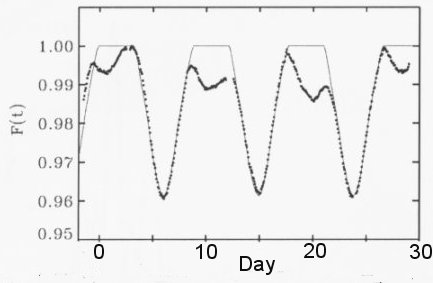
 |
The brightess of Kappa-1 Ceti, given by F(t) on the vertical axis, varies by about four percent over an 8.9 day period as a prominent spot near the equator moves in and out of view as the star rotates. Superimposed is another variation of 9.3 days caused by a spot at a higher latitude. The solid line shows what would be expected without the second spot. The difference in period is caused by differential rotation. (S. L. Rucinski et al., Publications of the Astronomical Society of the Pacific, vol. 116, p. 1093, 2004.) |